4/1/2019
Das Neueste aus Essen
Chris Beytes
The annual IPM Essen show, held every January in Essen, Germany, offers a wealth of inspiration to growers and retailers alike. Even if the specific products you see on display aren’t available here in North America, you can glean ideas for how you might assemble, display or market your own offerings.
The show also is a great place to see what’s trending in European garden centers and florist shops. Interestingly, unlike North American shows where you can find everything under the sun, the exhibitors at IPM all seem to be on the same page when it comes to design and décor trends. Maybe it’s too homogenized for those who like variety, but it makes it easy for a magazine editor to tell you what’s hot. Which this editor will do over the following 3 1/2 pages.
But why depend on us to tell you what’s trending? Attend IPM Essen for yourself. The 2020 show is slated for January 28-31. Find all the details at ipm-essen.de.
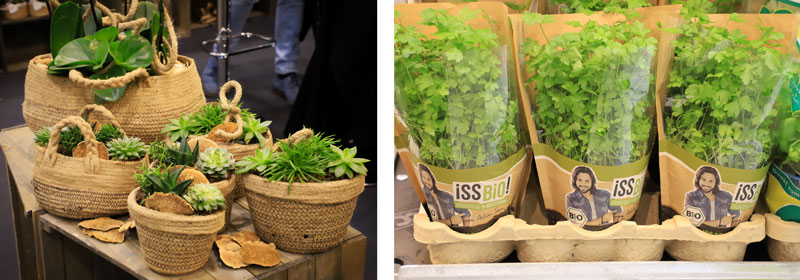
Natural/bio
Walk through the many plant halls and you quickly note how much natural packaging is being used. Paper and cardboard (both undyed), bio pots, baskets, clay and ceramic in earth tones … it would be a safe bet that at least half of all packaging is created from—or made to look like—a natural material.
Along those same lines are “bio” products—the European term for organic—as well as products sporting the buzzwords “pure,” “natural” and the like. (It doesn’t hurt to add an image of a hunk to your herb line.)
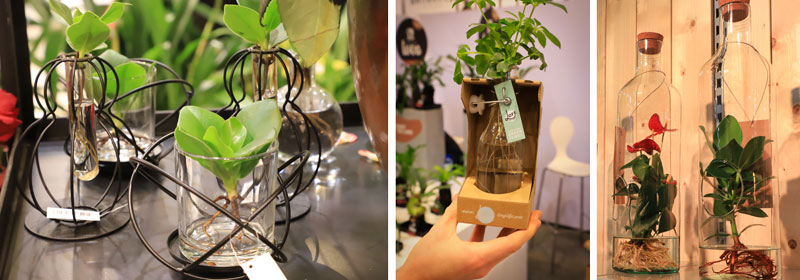
Glass/metal
If you’re a fan of terrariums, you’re in luck: they’re apparently back in style, in many forms. Often, the plants feature no soil, just exposed roots (again, for the “natural” look). Sometimes they combine glass and metal and exposed roots. Also note the natural-colored tag material. The whole effect is one of purity and authenticity.
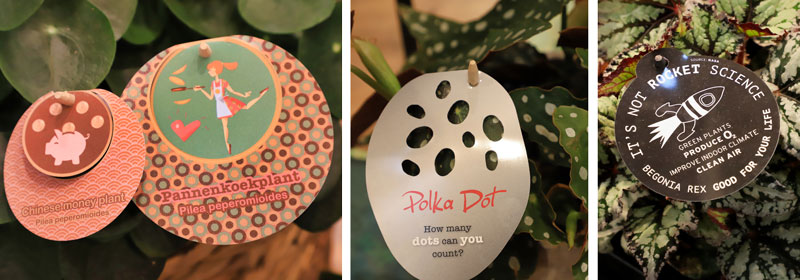
Interesting tags/great labeling
Europeans have long known how to do clever plant tags, and they’re continuing to express their creativity during the current houseplant craze. Note two different designs for Pilea peperomioides, and the die-cut tag for the polka dot begonia. The monkey leaf monstera (M. Adansonii) won a Dutch Tulip Award from Royal FloraHolland for being Instagram-worthy.
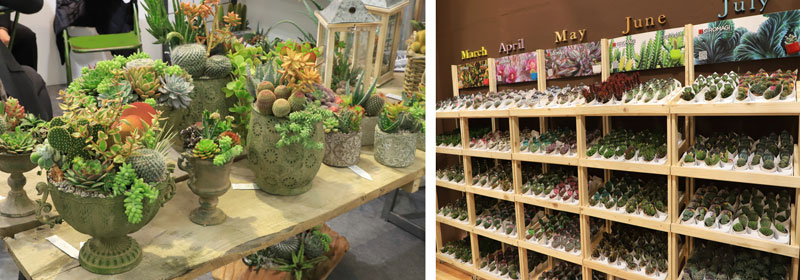
Succulents
Succulents have been popular at IPM; this year, I didn’t necessarily see more than usual, but I did spot three nice displays: The first shows some colorful cacti/succulent combo planters. Note the natural, rustic look of the containers. The second features mass market-style racks by month. I believe the concept isn’t to show them all at once, but to bring in a different rack each month, to keep customers coming back to collect new specimens. The third concept, by the same company, shows the difference that undershelf LED lights can make to a rack display.
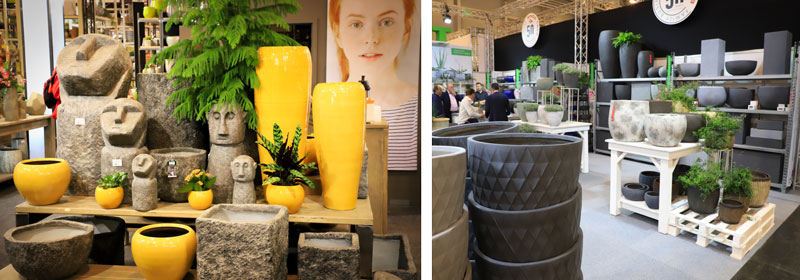
Colors
What colors are on-trend in Europe? I’d say a lack of color is what’s most trendy. Gray tones, often in concrete or stone textures, remain the dominant color scheme in containers. Black and white are classics. You see some colors that go well with gray, such as spring green, yellow and purple, but only as accents. Occasionally, one would spot an urban display with pops of graffiti-inspired colors, but the norm today seems to be green, earthy and natural.
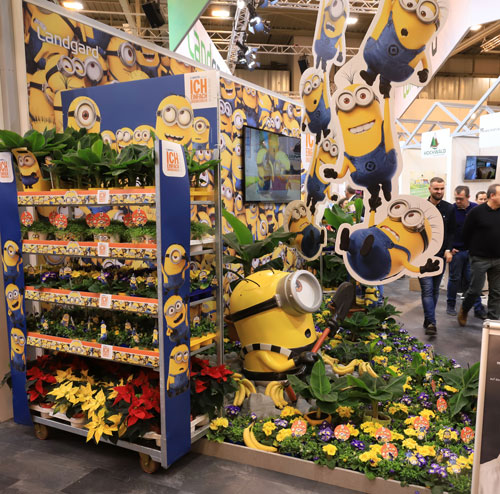
Minions
Landgard, the big German plant auction, spends big money to license big brands, which they make available (for a fee, of course) to their member growers. They’ve got Weber Grill herbs and several lines for kids featuring popular European cartoon characters. This year, they went wild, adding Jurassic World and Minions to their portfolio of licensed brands. GP